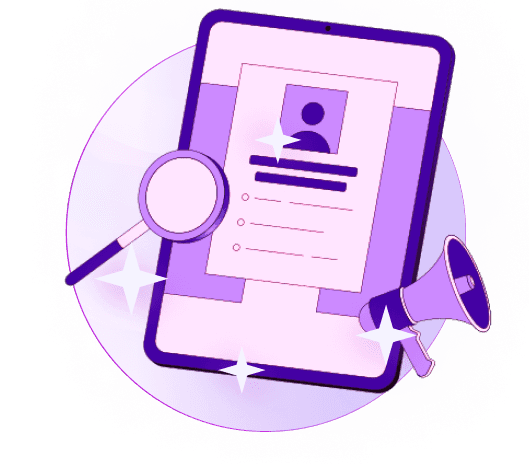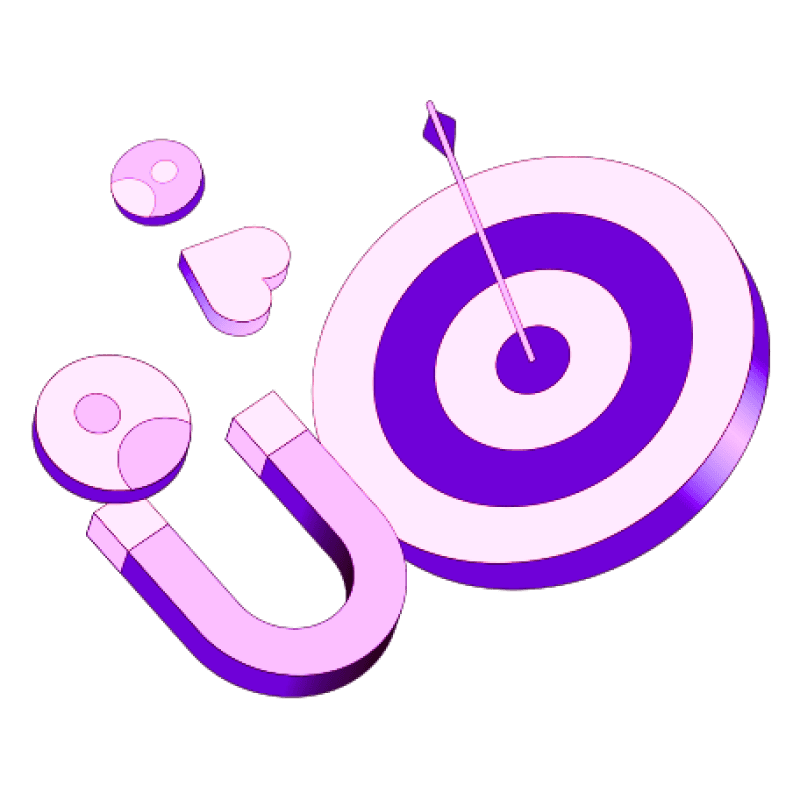Blogs
Articles

AI Lead Generation Case Studies: Real-World Success Stories 2025
AI lead generation case studies show an impressive pattern. Teams that use this technology report a 76% increase in win rates. Their deal cycles are 78% shorter and deal sizes have grown by 70%. These results don't just improve business metrics - they revolutionize sales operations across the globe.
This piece examines ground AI lead generation case studies that showcase companies' success. These organizations utilize machine learning, natural language processing, and predictive analytics to find ideal prospects with remarkable accuracy.
The success stories range from intelligent prospecting to customized outreach. Your business can apply these proven strategies to revolutionize your sales pipeline and stimulate growth in 2025 and beyond.
AI for Prospecting and Lead Scoring
Predictive analytics has changed the game for sales teams to identify and prioritize potential customers. The numbers speak for themselves - companies that use AI-powered lead scoring see up to 30% better conversion rates than traditional methods.
Case Study 1: Predictive lead scoring at scale
A mid-sized insurance company teamed up with data science experts to fix their lead management process. The company struggled to use their resources well and couldn't prioritize leads accurately. Sales agents spent precious time chasing weak leads while missing out on promising prospects.
The company saw remarkable results after they started using predictive lead scoring powered by machine learning:
Over 90% accuracy in identifying high-conversion leads
3.5x higher conversion rates for top-scoring leads compared to average
80% reduction in conversions for low-scoring leads, saving agent time
6% reduction in non-efficient leads, resulting in a 1.5% profit increase within months
The system analyzed complete data sets including source information, behavioral patterns, demographic details, and property data. This approach worked well because the AI kept learning from new data and adapted to market changes and buyer priorities instantly.
Case Study 2: Intelligent prospect identification using LinkedIn and CRM data
VTT Technical Research Center of Finland took their prospecting to the next level by combining AI with LinkedIn and CRM data. Their SDRs used to spend up to 1,000 hours every year qualifying leads, reaching less than half of their 4,000 annual leads.
The team saw immediate efficiency improvements after implementing AI sales prospecting with Agentforce. The technology analyzed buyer behavior, engagement signals, and CRM data to spot high-fit leads early in the process.
The solution utilized LinkedIn's proprietary data through Sales Navigator to combine key insights about leads. The AI analyzed factors like website visits and content engagement to rank accounts by intent level. These changes helped VTT boost lead engagement substantially, and they now expect to reach 100% of inbound leads.
Sales teams looking to achieve similar results with AI-powered lead generation can try Persana. Their solutions combine predictive analytics with intelligent prospecting to help teams identify and prioritize the most promising leads.
AI for Personalization and Outreach
Customized outreach has become the life-blood of successful lead generation. AI-powered tools now deliver remarkable results. Personalized emails show a 14% higher open rate and a 10% higher response rate compared to non-personalized approaches.
Case Study 3: Hyper-personalized email and LinkedIn campaigns
A B2B services provider built an automated LinkedIn outreach system. The system identified potential leads based on specific criteria and sent customized connection requests with tailored follow-up messages. It mimicked human interaction patterns and avoided LinkedIn's automation detection mechanisms.
The results were impressive. The company saved 25 hours of manual work each week and increased lead generation by 40%. Connection acceptance rates climbed to 55% while direct messages received a 19% reply rate.
A retail business that used hyper-personalization in email campaigns saw great success too. Their open rates improved by 28% and revenue from email campaigns grew by 15% in just six weeks. These results show how small teams can achieve measurable wins with targeted personalization.
Case Study 4: Automated outreach using AI SDRs
AI Sales Development Representatives (SDRs) have revolutionized outreach efficiency through multiple channels. These smart systems analyze responses and engagement to determine sales readiness. They answer questions, handle objections using natural language, and book meetings directly into a rep's calendar.
AI SDRs have significantly improved sales performance. One enterprise added an AI-powered chatbot with smart conversation flows. The results were outstanding - a 496% increase in pipeline and 454% growth in bookings from chatbot-generated leads.
Companies that use AI-powered sales automation tools see conversion rates increase by 25% on average. AI SDRs also help qualify prospects 3x faster, reduce response time by 65%, and improve meeting conversion rates by 40%.
Persana provides sophisticated solutions that combine customized outreach with intelligent automation. These tools help sales teams connect with prospects effectively and achieve similar results through AI-powered personalization.
AI for Customer Engagement and Journey Mapping
Conversational AI technologies are changing how businesses connect with potential customers through smart, up-to-the-minute interactions. Research indicates that Conversational AI will cut contact center agent labor costs by $80 billion annually by 2027.
Case Study 5: Conversational AI for up-to-the-minute qualification
A mid-sized SaaS company's e-book reader platform faced challenges converting top-of-funnel leads into qualified opportunities. They added an AI chatbot to their CRM to solve this. The chatbot used the BANT framework and wove qualification questions naturally into visitor conversations about needs, authority, budget, and timing.
The company saw impressive results with more qualified leads, faster demo scheduling, and better close rates from chatbot-qualified leads. AI chatbots now handle 80% of routine queries and let human agents focus on complex cases.
Case Study 6: Trip orchestration with AI-powered content delivery
Nielsen Norman Group's research shows that traditional customer journey mapping can take days or weeks. Starbucks changed this approach with their AI system, Deep Brew, that uses predictive analytics to create personalized mobile app offers.
The system boosts customer trip orchestration through instant decision-making. AI analyzes customer interactions in real time and lets marketers adjust their strategies quickly. While setup can be complex at first, companies using AI-driven trip orchestration have seen 10-20% revenue growth and 15-25% cost savings.
AI for Sales Enablement and Optimization
Sales teams that use AI tools for coaching and territory planning see remarkable efficiency gains in their operations. A detailed study shows companies using AI-driven sales performance management achieve up to 30% better conversion rates in their optimization efforts.
Case Study 7: AI-driven sales coaching and performance tracking
BTS's Verity, an AI coaching system, changed how a wellness company approached sales training. The platform recorded and analyzed Zoom calls automatically and provided objective scoring based on playbook adherence. The company achieved a 39% increase in playbook adherence, 7% increase in conversion rates, and saved managers 26 hours monthly in just 90 days.
An enterprise tech company created an AI coaching assistant modeled after their C-suite sales leader. This digital twin delivered tailored coaching using existing leadership content and ended up speeding up seller ramp time while improving customer conversations.
Case Study 8: Deal intelligence and territory planning with AI insights
AI-powered territory planning has evolved from an administrative burden into a strategic advantage. These systems design smarter, more equitable territories by analyzing market data, customer behavior, and competitive information. Organizations using AI for territory management report sales increases of 2-7% through better alignment alone. The technology rebalances territories dynamically as market conditions change and ensures teams focus on promising opportunities.
Companies using AI in their planning achieve up to a 15% revenue lift and 35% increase in new customer acquisition. AI-powered revenue intelligence platforms serve as command centers for sales operations, with machine learning models calculating win probabilities that reach 96% forecasting accuracy compared to just 66% with human judgment alone.
Conclusion
Case studies in this piece show how AI has reshaped the lead generation scene in many ways. Companies that use AI-powered lead scoring have achieved up to 30% better conversion rates. They can now spot high-potential prospects with amazing accuracy. On top of that, businesses using tailored AI outreach strategies have seen better results. Their personalized emails get 14% higher open rates and 10% higher response rates.
AI tools excel at fixing specific issues throughout the sales process. One insurance company achieved 3.5x higher conversion rates with predictive scoring. A SaaS business boosted its qualified leads through conversational AI. These success stories prove AI's ground applications.
Businesses that don't adopt these technologies by 2025 risk falling behind their competitors. Companies already using AI enjoy shorter sales cycles, bigger deals, and better win rates. Market growth numbers tell the same story - from $1.7 billion in 2023 to $9.5 billion by 2030.
The next steps are straightforward. Companies should assess their current lead generation process and find areas where AI can make improvements. Persana provides complete AI tools that can reshape prospecting, personalization, and sales enablement for organizations seeking similar results.
Without doubt, AI's rise in lead generation isn't just a future possibility - it's happening now with measurable results across industries. Your business shouldn't question whether to implement AI-powered lead generation. The real question is how quickly you can start using these proven strategies to accelerate growth in today's competitive market.
Key Takeaways
These real-world AI lead generation case studies reveal transformative results that are reshaping sales operations across industries, with companies achieving remarkable improvements in conversion rates, efficiency, and revenue growth.
• AI-powered lead scoring delivers 90%+ accuracy in identifying high-conversion prospects, resulting in 3.5x higher conversion rates and significant time savings for sales teams.
• Hyper-personalized AI outreach generates 14% higher email open rates and 10% better response rates, while automated LinkedIn campaigns achieve 55% connection acceptance rates.
• Conversational AI chatbots handle 80% of routine qualification tasks and can increase pipeline by 496% through intelligent real-time prospect engagement.
• AI-driven sales coaching and territory planning boost playbook adherence by 39% and deliver 2-7% sales increases through smarter resource allocation.
• Companies implementing comprehensive AI lead generation strategies report 76% higher win rates, 78% shorter deal cycles, and revenue improvements of 10-20%.

Create Your Free Persana Account Today
Join 5000+ GTM leaders who are using Persana for their outbound needs.
How Persana increases your sales results
One of the most effective ways to ensure sales cycle consistency is by using AI-driven automation. A solution like Persana, and its AI SDR - Nia, helps you streamline significant parts of your sales process, including prospecting, outreach personalization, and follow-up.



